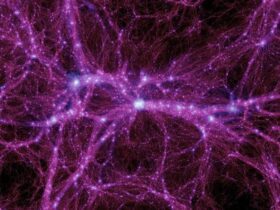The JWST (James Webb Space Telescope) has reached another incredible milestone: its first exoplanet finding confirmation. The telescope has already produced visually breathtaking and scientifically outstanding results from its first six months of operation. It looked 41 light years into space and discovered the LHS 475 b, a planet in the fascinating Octans constellation with a diameter of up to 99 % that of Earth.
Discover the full story below and learn more about the new exoplanet.
What’s So Special at Exoplanet LHS 475b?
“There is no question that the planet is there. Webb’s pristine data validate it,” stated Jacob Lustig-Yaeger from the Johns Hopkins University Applied Physics Laboratory.
A group of scientists discovered the potential exoplanet’s initial signs while studying data produced by NASA’s Transiting Exoplanet Survey Satellite (TESS). However, by spotting two transits of the planet in front of its parent star, Webb’s Near-Infrared Spectrograph (NIRSpec) provided definitive proof of the planet’s existence. Quite impressive, isn’t it?!
Check out the official announcement on NASA’s Webb Telescope’s Twitter page:
A whole new world!
41 light-years away is the small, rocky planet LHS 475 b. At 99% of Earth’s diameter, it’s almost exactly the same size as our home world. This marks the first time researchers have used Webb to confirm an exoplanet. https://t.co/hX8UGXplq2 #AAS241 pic.twitter.com/SDhuZRfcko
— NASA Webb Telescope (@NASAWebb) January 11, 2023
The team led by Kevin Stevenson and Jacob Lustig-Yaeger from the Johns Hopkins University Applied Physics Laboratory is still investigating the transmission spectrum of the rocky mass to discover what kind of atmosphere, if any, is perched on it. However, they are certain that it does not have an oppressive atmosphere like Titan, a moon of Saturn.
At those distances, it is also possible that the planet will only be concealing a very tiny amount of atmosphere near the surface. A further investigation, as previously mentioned, is needed to bring into light more details.
The researchers have also proven that LHS 475 b maintains a two-day tidally-locked orbit around its star. That is theoretically able to support an atmosphere since LHS orbits a red dwarf emitting less than half of our sun’s energy.
According to NASA, only the JWST has the resolving power to precisely define the atmospheres of Earth-sized exoplanets among the telescopes now in use.













Leave a Reply